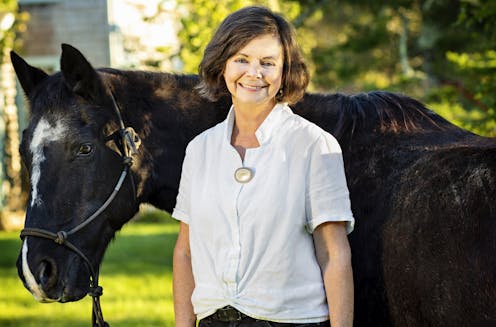Geraldine Brooks's Horse is a richly detailed examination of the violence of America's past
- Written by Anne Pender, Kidman Chair in Australian Studies, University of Adelaide

In a letter accompanying the advance copy of her latest novel, Pulitzer Prize winner Geraldine Brooks reveals the inspiration for Horse[1].
The author was propelled into the research for this masterly work by a chance conversation with a staff member from the Smithsonian Museum regarding the fastest, most celebrated American racehorse of the 19th century:
A horse so fast that the mass-produced stopwatch was manufactured so his fans could clock times in races that regularly drew more than twenty thousand spectators. A horse so handsome that the best equestrian artists vied to paint him …
Review: Horse – Geraldine Brooks (Hachette)

















